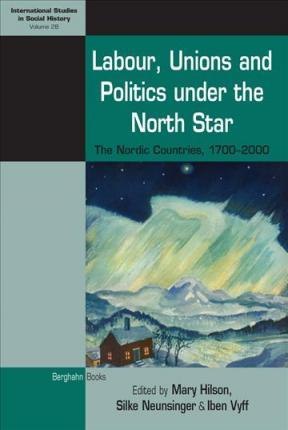
Denmark, Finland, Iceland, Norway, and Sweden today all enjoy a reputation for strong labour movements, which in turn are widely seen as part of a distinctive regional approach to politics, collective bargaining and welfare. But as this volume demonstrates, narratives of the so-called “Nordic model” can obscure the fact that experiences of work and the fortunes of organized labour have varied widely throughout the region and across different historical periods. Together, the essays collected here represent an ambitious intervention in labour historiography and European history, exploring themes such as work, unions, politics and migration from the early modern period to the twenty-first century.
Mary Hilson is Professor of History at Aarhus University, Denmark. She is the author of Political Change and the Rise of Labour in Comparative Perspective: Britain and Sweden 1880-1920 (2006) and The Nordic Model: Scandinavia since 1945 (2008).
Silke Neunsinger is Associate Professor in Economic History and Director of Research at the Swedish Labor Movement Archives and Library. Her research has been concerned with feminist labour history, the history of social movements and methodology. She is currently working on a global history of equal remuneration.
Iben Vyff is Head of Communication at Elsinore Museums, Denmark. Her research has been concerned with the cultural turn in Cold War studies, Americanization and gender. She is co-author of Dansk Skolehistorie: Hverdag, vilkår og visioner gennem 500 år, which received the History Book of the Year Award from the Danish History Council in 2015.
CONTENTS
List of Illustrations
List of Tables and Maps
Acknowledgements
List of Abbreviations
Introduction: Labour, Unions and Politics in the Nordic Countries, c.1700–2000
Mary Hilson, Silke Neunsinger, Iben Vyff, Ragnheiður Kristjánsdóttir
Chapter 1. Connecting Labour: Organizing Swedish Ironmaking in an Atlantic Context
Göran Rydén and Chris Evans
Chapter 2. ‘Forest Men’: How Scandinavian Loggers’ Understandings of ‘Real Men’ and ‘Real Work’ are Rooted in Personal Narratives and Popular Culture about Forest Life
Ingar Kaldal
Chapter 3. Diverse, rather than Desperate: Housewifization and Industrial Home Work in Sweden, 1906–1912
Malin Nilsson
Chapter 4. Housemaids of the Past and Au Pairs of Today in Denmark: Do They Have Anything in Common?
Helle Stenum
Chapter 5. Trade Unionism in Denmark, 1870–1940 – from the Perspective of Work
Knud Knudsen
Chapter 6. Labour Migration and Industrial Relations: Recruitment of Foreign-Born Workers to the Swedish Engineering Industry after the Second World War
Johan Svanberg
Chapter 7. Land Agitation and the Rise of Agrarian Socialism in South-Western Finland, 1899–1907
Sami Suodenjoki
Chapter 8. Strike in Finland, Revolution in Russia: The Role of Workers in the 1905 General Strike in the Grand Duchy of Finland
Marko Tikka
Chapter 9. Radicalism or Integration: Socialist and Liberal Parties in Norway, 1890–1914
Einar A. Terjesen
Chapter 10. ‘Norden’ as a Transnational Space in the 1930s: Negotiated Consensus of ‘Nordicness’ in the Nordic Cooperation Committee of the Labour Movement
Mirja Österberg
Chapter 11. Facing the Nation: Nordic Communists and their National Contexts, from the 1920s and into the Cold War
Ragnheiður Kristjánsdóttir
Chapter 12. Tallinn – Stockholm – Hamburg – Copenhagen – Oslo: The Northern Dimension of the Comintern’s Global Network and Underground Activities, 1920–1940
Holger Weiss
Chapter 13. Danish Cadres at the Moscow Party School, 1958–1960
Chris Holmsted Larsen
